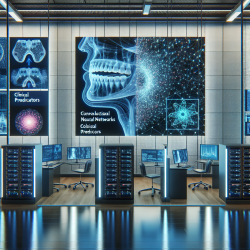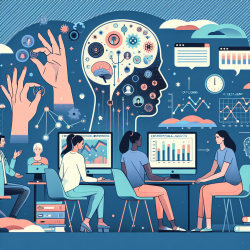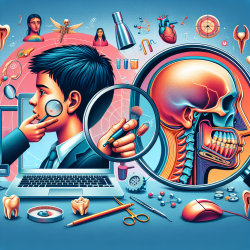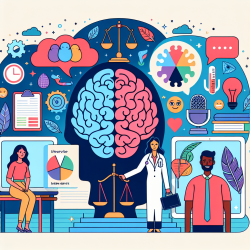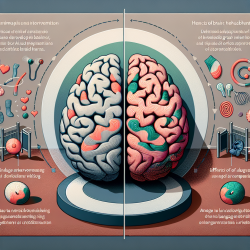Introduction
The field of medical diagnostics is rapidly evolving with the advent of advanced technologies like deep learning. A recent study titled "Convolutional Neural Network-Based Clinical Predictors of Oral Dysplasia: Class Activation Map Analysis of Deep Learning Results" has provided groundbreaking insights into the early detection of oral dysplasia using convolutional neural networks (CNNs). This blog post explores how practitioners can enhance their skills by implementing the outcomes of this research or by delving deeper into further studies.
Understanding the Research
The study focuses on developing a CNN-based method to classify images of oral lesions as "suspicious" or "normal." By generating automated heat maps, the method highlights regions of images most likely involved in decision-making. The research utilized two datasets from the UK and Brazil, achieving impressive accuracy rates of up to 90.9% in classifying oral dysplasia.
Key Outcomes for Practitioners
For practitioners in the field, the research offers several key takeaways:
- Objective Diagnosis: The use of CNNs can reduce subjectivity in diagnosing oral lesions, providing a more standardized approach to early detection.
- Enhanced Accuracy: The study's results demonstrate that CNNs can significantly improve the accuracy of oral dysplasia detection, which is crucial for early intervention and improved patient outcomes.
- Understanding Image Regions: Class activation maps (CAMs) provide insights into which regions of an image are influential in the classification process, helping practitioners understand the decision-making process of neural networks.
Implementing the Findings
Practitioners can enhance their diagnostic capabilities by integrating CNN-based tools into their practice. Here are some steps to consider:
- Training and Familiarization: Engage in training sessions to understand the operation and interpretation of CNN-based diagnostic tools.
- Collaboration with Technologists: Work closely with data scientists and technologists to customize CNN models to fit specific clinical needs.
- Continuous Learning: Stay updated with the latest research and advancements in deep learning applications in medical diagnostics through webinars and conferences.
Encouraging Further Research
While the study presents promising results, it also opens avenues for further research:
- Dataset Expansion: Larger and more diverse datasets can improve the generalizability of CNN models.
- Integration with Other Modalities: Combining CNN-based analysis with other imaging modalities could enhance diagnostic accuracy.
- Real-world Application: Conducting real-world trials to assess the practical applicability and impact of CNN-based diagnostics in clinical settings.
Conclusion
The integration of deep learning techniques in the diagnosis of oral dysplasia represents a significant leap forward in medical diagnostics. By embracing these technologies, practitioners can improve diagnostic accuracy and patient outcomes. To delve deeper into the research, practitioners are encouraged to read the original research paper titled Convolutional Neural Network-Based Clinical Predictors of Oral Dysplasia: Class Activation Map Analysis of Deep Learning Results.
